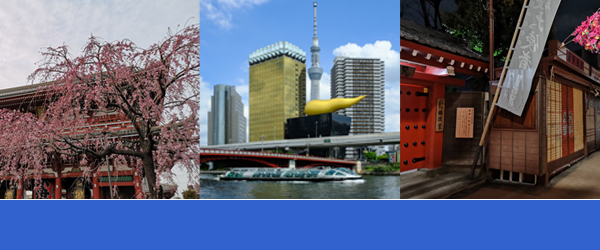In Japan, fusion is much more than a culinary trend; it’s a way of life rooted in the country’s rich history and vibrant culture. From the blending of architectural styles in the bustling city streets to the merging of millennia-old traditions with technological innovation, Japan is renowned for its ability to fuse the ancient with the modern in every aspect of daily life. And of course, food is no exception.
Tonkatsu (and Katsudon), an iconic dish of Japanese cuisine, is a perfect example of this unique culinary fusion. Born from the combination of Western frying technique with traditional Japanese flavors and ingredients, tonkatsu is a delicious manifestation of Japanese skill to adapt and transform external influences into something truly unique and appreciated.
In this article, don’t miss out on our recommendation for where to enjoy an excellent Tonkatsu!
During the Meiji Period (1868-1912), Japan underwent a rapid transformation towards modernity, adopting numerous Western culinary practices. One such influence was the French recipe for côtelette de veau, a breaded veal cutlet fried in butter. However, the Western-style restaurant Rengatei (by the way, still open), established in 1895 in Ginza, found this method too greasy and heavy for Japanese tastes. Thus, tonkatsu was born when Rengatei adapted the Japanese tempura technique to fry the breaded cutlet in a pot of hot oil. This change resulted in a crispier, lighter dish, more appealing to the Japanese palate. Tonkatsu made its debut on Rengatei’s menu in 1899 under the name “pork cutlet”. Over the years, tonkatsu has evolved to suit changing tastes but remains a timeless delight, cherished both at home and in restaurants.
Alright, now that we’ve delved a bit into history, let’s dive into what you’ve been waiting for – tantalizing your taste buds with today’s recommendation, none other than…. Katsuya. While there may be specialized katsudon and tonkatsu restaurants out there, when it comes to the balance of quality and price, Katsuya raises doubts (and if you know any better ones, please do let us know!)

Katsuya entrance in Asakusa
We’re excited to dive into Katsuya’s extensive menu, but with so many tempting options, we’ll have to limit ourselves to just three dishes for today’s tasting.
First off, Katsuya is set up for everyone. Upon entering, you seat yourself where there’s an available spot, and the menu is right there on the table, in both English and Japanese (if you’re feeling confident in your Japanese skills, try ordering using only the Japanese menu!). Just say “sumimasen” to get the waiter’s attention – it’s as simple as that. When your food arrives, they’ll bring you the bill too, which you take to the counter when paying, and voila! Couldn’t be easier.

English menu

Japanese menu
Now let’s start eating!
We’ll start with the most classic…

The classic katsudon at Katsuya is a dish that delights with every bite, offering an exquisite combination of flavors and textures. The breaded pork cutlet, expertly fried to achieve a golden crispy texture, rests atop a bed of perfectly cooked rice. With each bite, the crunchy panko coating melds with the juicy tenderness of the meat, creating an unparalleled sensation.
Katsuya uses nama panko, real bread crumbs made from freshly crumbled bread, and absorb less oil, resulting in katsudon that remains crispy longer. If sauces are drizzled, they are better absorbed.
It’s a satisfying delight offered in three sizes: ume (梅) with 80g of succulent pork, take (竹) with a hearty 120g portion, and matsu (松) featuring two mouthwatering 80g pork cutlets alongside a pair of perfectly cooked eggs. No matter what branch you go to, Katsuya serves pork cutlets that are consistently crisp outside and moist, tender, tasty inside every single time.

Toppings

Toppings
Want to uncover the secret behind its mouthwatering flavor? Shhhh, keep it hush-hush, I’ll spill the beans just for you:
- Origin and Quality of Pork
The pork used in Katsuya’s katsu comes from major packers in North America. It is refrigerated and transported to Japan, where it is cut at Katsuya’s designated factory. This process ensures tasty, high-quality meat.
- Bread Crumb Preparation
Fresh breadcrumbs are used to create a crispy texture when baked and absorb minimal oil when fried. Special attention is paid to achieving optimal texture, color, and flavor when frying. This ensures a crispy and delicious eating experience.
- Selection of Japanese Rice
To complement the delicious flavor of the katsu, high-quality Japanese rice is used. Rice with a high water retention capacity on the grain surface, giving it a glossy appearance, is selected. It has the right amount of stickiness and a firm, elastic grain feel.
- Quality of Cabbage
Cabbage used in Katsuya’s dishes comes from designated farms and is sliced to a thickness of 1.1mm to 1.2mm at a nearby processing factory. This ensures consistent quality and a pleasant texture.
- Automatic Fryer Technology
To ensure consistent deliciousness nationwide and quickly serve customer orders, automatic fryers have been introduced. These ensure excellent frying technique and control oil oxidation for crispy and flavorful katsu.
Now, let’s move on to the second dish, this time the other crown jewel of Katsuya…
In this case、 it was oroshikatsu (grated daikon radish over fried cutlet)

The tonkatsu, topped with grated daikon, offers an irresistible combination of flavors. The pork, tender and juicy on the inside, is complemented by the freshness and lightness of the grated daikon. Additionally, the cabbage, cut to perfection, provides a crunchy texture and a refreshing flavor that contrasts beautifully with the juiciness of the tonkatsu. As a perfect accompaniment, a soup is served that enhances the flavors of the main dish and completes the culinary experience deliciously. Together, these elements create a harmony of flavors and textures that delight the senses and make tonkatsu a true gastronomic delight.
And now, the last (but certainly not least) dish for today…
It’s a dish that screams ‘seasonal delight,’ so naturally, we’ve decided to feature it on today’s menu!

Katsuya offers special monthly menu every months and attracts everyone including regular customers. Tonkatsu, grilled innards and fried egg comes on rice that is unique combination to be served in a bowl of rice. Grilled innards with Katsuya’s special miso sauce gives sweet but also savory flavour that it goes well with rice.
Monthly menu often comes with 2 or 3 different garnishes. It is good dish for someone who would like to eat a variety of topping in a bowl.








